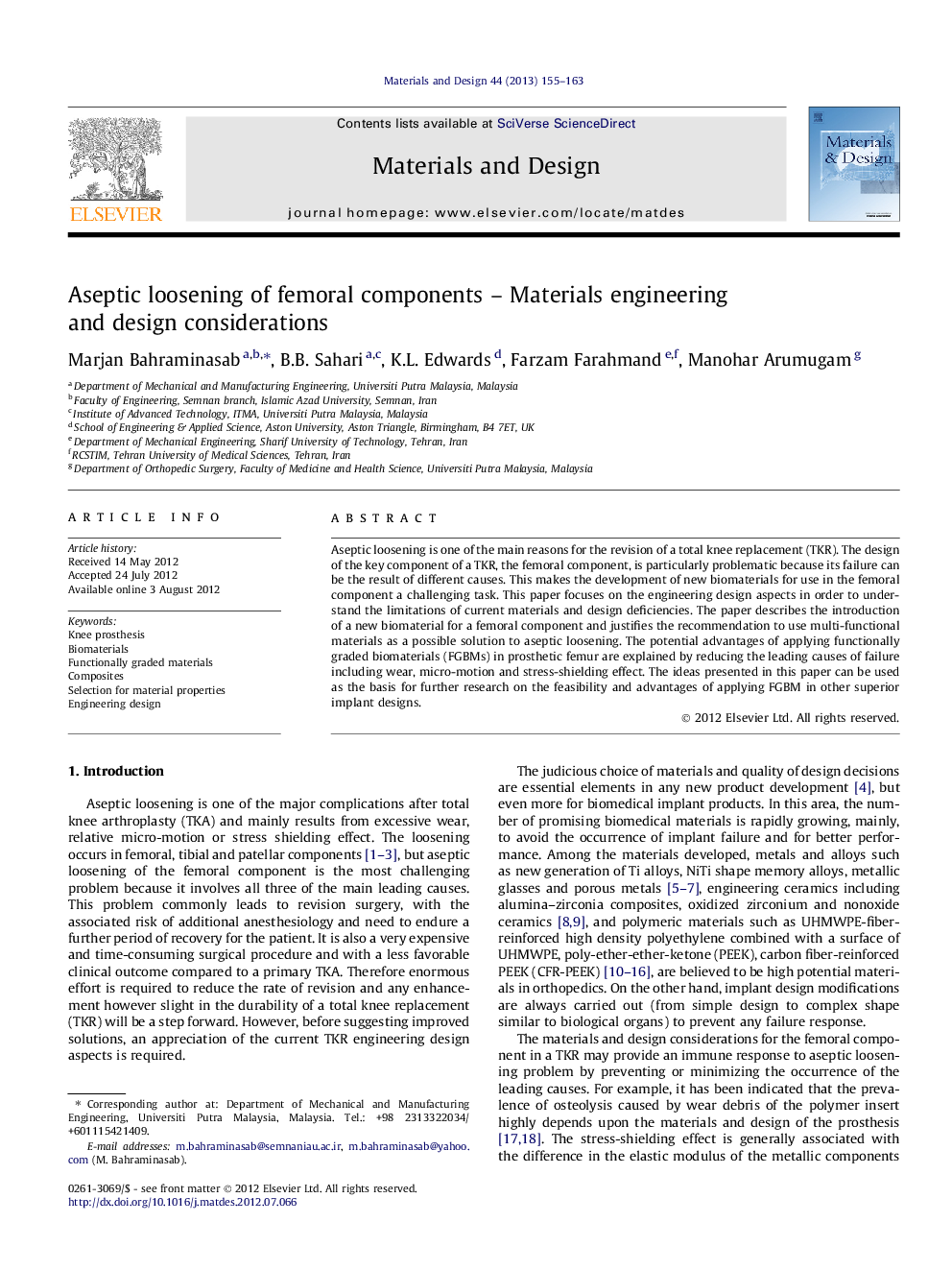| Article ID | Journal | Published Year | Pages | File Type |
|---|---|---|---|---|
| 830319 | Materials & Design (1980-2015) | 2013 | 9 Pages |
Aseptic loosening is one of the main reasons for the revision of a total knee replacement (TKR). The design of the key component of a TKR, the femoral component, is particularly problematic because its failure can be the result of different causes. This makes the development of new biomaterials for use in the femoral component a challenging task. This paper focuses on the engineering design aspects in order to understand the limitations of current materials and design deficiencies. The paper describes the introduction of a new biomaterial for a femoral component and justifies the recommendation to use multi-functional materials as a possible solution to aseptic loosening. The potential advantages of applying functionally graded biomaterials (FGBMs) in prosthetic femur are explained by reducing the leading causes of failure including wear, micro-motion and stress-shielding effect. The ideas presented in this paper can be used as the basis for further research on the feasibility and advantages of applying FGBM in other superior implant designs.
► Aseptic loosening of femoral component is associated with the deficiencies in engineering design. ► The main leading causes of loosening are wear behavior, bioactivity and mechanical properties. ► Functionally graded biomaterials have the potential to reduce the occurrence of leading causes.
